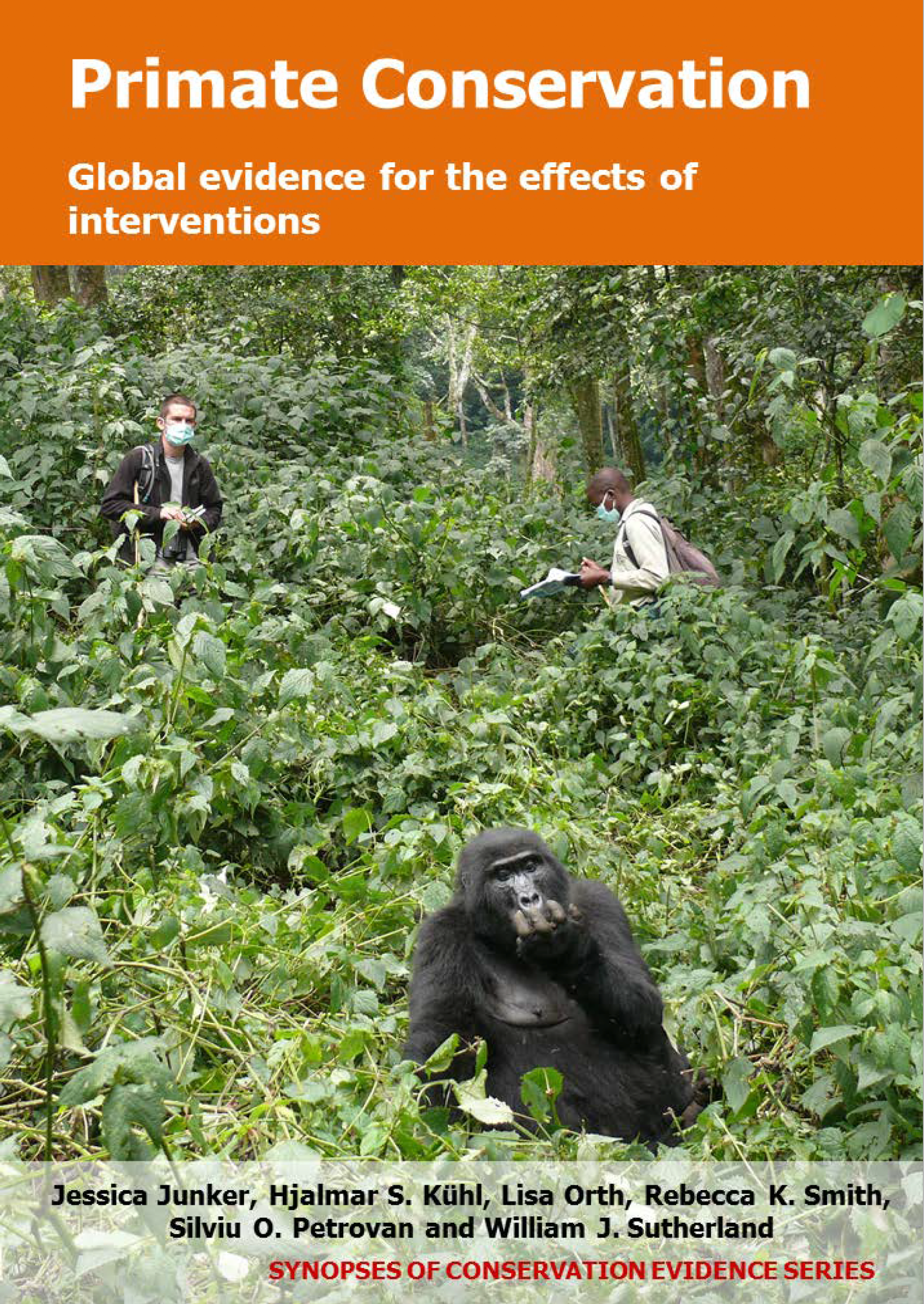Provide non-monetary benefits to local communities for sustainably managing their forest and its wildlife (e.g. better education, infrastructure development)
-
Overall effectiveness category Unknown effectiveness (limited evidence)
-
Number of studies: 2
View assessment score
Hide assessment score
How is the evidence assessed?
-
Effectiveness
40% -
Certainty
10% -
Harms
0%
Study locations
Supporting evidence from individual studies
A before-and-after trial in 1994-1999 in mixed tropical forest in Conkouati-Douli National Park, Republic of Congo found that the majority of central chimpanzees Pan troglodytes troglodytes that were reintroduced in an area where local people were provided non-monetary benefits for supporting the programme alongside 16 other interventions, survived over five years. Out of 20 reintroduced chimpanzees, fourteen (70%) survived. No statistical tests were carried out to determine whether the population decrease was significant. Local communities were provided emergency medical care and were assisted otherwise. No further details on this intervention were given. Monetary benefits were provided to compensate people for the former use of resources at the site. Rehabilitated orphaned chimpanzees underwent vaccination, parasite treatments and veterinary screens before being radio-collared and translocated in four subgroups to the release site where resident conspecifics occurred. Staff members were permanently present to monitor primate health, provide supplementary food if necessary and examine dead animals. The area status was upgraded from reserve to national park in 1999. Local people were relocated from the release site. Some individuals were treated when sick or injured. TV and radio advertisements were used to raise chimpanzee conservation. The study does not distinguish between the effects of the different interventions mentioned above.
Study and other actions testedA before-and-after trial in 2004-2009 in tropical forest in the Gibbon Wildlife Sanctuary in Assam, India found that hoolock gibbons Hoolock hoolock increased by 66% over five years after providing alternative income to local communities along with other interventions. The gibbon population increased from 64 individuals in 17 groups in 2004 to 106 individuals in 26 groups (and five solitary males) in 2009. Canopy cover also increased by 3.5% while degraded forest decreased by 4.1%. No statistical tests were carried out to determine whether these changes were significant. Families within local communities that were selected through socio-economic studies were provided with more efficient stoves, bio-gas plants, handlooms and domestic ducks. Local communities were trained in mushroom cultivation, honeybee keeping and duck husbandry. A large-scale education and awareness programme was implemented to promote gibbon conservation within Assam and training, monitoring and legal orientation programmes were carried out for the sanctuary staff. The study does not distinguish between the effects of the different interventions mentioned above.
Study and other actions tested
Where has this evidence come from?
List of journals searched by synopsis
All the journals searched for all synopses
This Action forms part of the Action Synopsis:
Primate Conservation
Primate Conservation - Published 2017
Primate Synopsis





)_2023.JPG)














